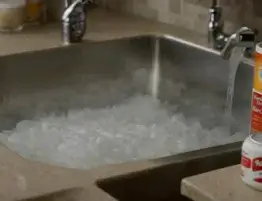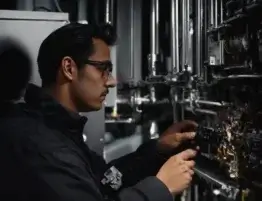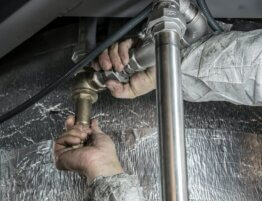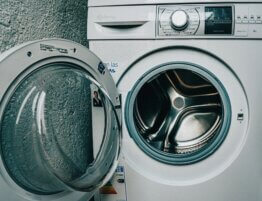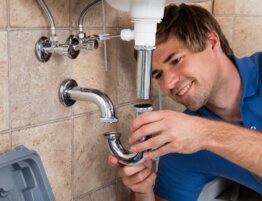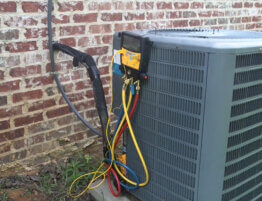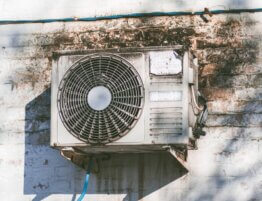
Many around the country are predicting a cold, cold winter ahead. As fall slowly descends into dreary winter, it’s time to start the necessary preparations for the cold and blustery season ahead.
Especially if you live in some of the country’s northern regions, prime among these tasks can be checking the status of your furnace. Your home’s heating system can really be your prime defense against the cold weather and failing to check in on it before the season changes can put you at a risk for a bad situation in the future.
You need a furnace that can ensure you stay warm and comfortable until spring arrives. But many people don’t know when to replace a furnace or what the tell-tale signs of trouble may be. Below, we’ll walk you through what to look for when doing your yearly check-up.
1. Your Last Bill
You’re already probably keeping a close eye on your gas and electric bill. Lucky for you, your bill can also give you solid insight into how your furnace is holding up.
There are multiple factors in the world that can contribute to a rising gas bill. Fluctuating fuel prices definitely may have an impact. But if you notice that your bill is continually rising, it might be a sign of an aging furnace.
Heating systems tend to lose their efficiency as they get older. They require more fuel to run and to heat your home properly. If you notice a continual rise in what you’re being charged on a monthly basis, it might be time to start looking at furnace replacement.
2. Your Furnace’s Age
Speaking of old furnaces, it’s worth checking in on how old your furnace is, exactly. The average life expectancy for a furnace in most American homes is somewhere between fifteen and twenty years. Most furnaces begin to significantly lose efficiency around the fifteen-year mark.
Like an automobile, a furnace typically begins to require maintenance and repairs more and more frequently as it ages. If your furnace has passed by its fifteenth birthday, it may be time to consider a new one.
Failing to do so could even cause you to lose money. The cost of repairs and gas can quickly surpass the cost of replacement if you let the problem go on for too long.
3. Banging and Popping Noises
As furnaces age, they can start to make a number of strange and even irritating noises. Metallic pings, pops, and rattles can become common in later years. These sounds can be caused by various things, but none of them are good.
Rattling noises are usually caused by unsecured ductwork, while popping is caused by sudden temperature changes. Screeching or squealing is usually indicative of a failed or failing motor.
No matter the sound, if your furnace is making one, it almost always means something is wrong.
4. Uneven Heating
A sure sign that it’s time to replace your furnace is when it begins to fail at the job it’s intended to do. A well working furnace should heat each of the rooms in your home evenly. An inefficient, aging furnace may successfully heat up one room but leave another cold and uncomfortable.
If you find yourself continually adjusting your thermostat depending on which room you want to spend time in, it may be time for a new furnace.
5. The Pilot Light Color
A quick check on the pilot light of your furnace can potentially give you all the information that you need.
Gas heating systems should have flames that burn bright blue when ignited. If something is wrong with your furnace, you might find a flickering yellow flame instead. What does this mean?
It usually means that the gas from your system is not burning fully. More concerning, it might mean that your heating system is producing higher than average levels of carbon monoxide. This is a situation that you do not want.
If you don’t have a strong blue flame from your furnace, you should consider repairing or replacing it as soon as possible.
6. Start Up Problems
Some homeowners with older furnaces run into a problem when they attempt to get them up and going. Furnaces who have seen many years might have trouble turning on or staying on for long periods of time.
Failure to run could be caused by a variety of problems, including faulty wiring or a broken blower fan. No matter the cause, if your furnace keeps shutting down, you’ll need to replace it before winter gets too cold to handle.
7. Soot, Dust, and Grime
Another unfortunate side effect of an old furnace is the mess that they can make in your home. Aged furnaces can begin to spit out dust, soot, and even pieces of rust. They can greatly contaminate the air flow inside of your home.
If you catch sight of soot or rust forming around the registers of your furnace, immediately call in for a replacement. This formation is usually caused by an excess of CO2, which can also harm your floors, walls, and any wooden surfaces in your home.
Outside of aesthetic damage, the release of these substances can put your family’s health at risk. If anyone in your home is experiencing dry eyes or scratchy throats, it can likely be traced back to an old furnace.
8. Multiple Repairs Needed
The first time or two that a furnace has a problem, most families call in for a repair instead of a replacement. Often, fixes can be quick and relatively affordable. However, if your furnace is continually breaking down and in need of repairs every few months, it may be time to accept the facts.
As your need for repair services increases, you should strongly consider plans for a new furnace for your heating system. Eventually, the cost of continual repairs will cause you to lose money instead of saving it.
Knowing When To Replace Furnace
Despite its importance in any cold climate home, many families don’t know exactly when to replace a furnace.
A brand new furnace can help to properly and efficiently heat a home. And replacing an old furnace can protect the safety of your household and those inside of it. Any responsible homeowner should be aware of the above signs and signals.
Need a professional opinion on your furnace or heating system? Contact us anytime for help.


